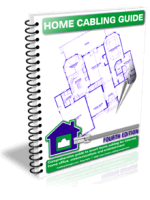Editorials
from Cabling-Design.com
|
|
|
Development of Category 6 is one of the hottest topics in the cabling industry. Now, when the draft standard is in its 7th version, some conclusions can already be made and used during today’s network upgrade decision making. Category 6 is a major breakthrough since ratification of Category 5 in 1995. The bandwidth of 250 MHz for Category 6 cabling presents a good step forward from 100 MHz of Category 5 and Category 5E. Category 6 has the headroom needed for future high-speed technologies that are already in development. If you did not know it, the first LAN application for Category 6 will probably be Gigabit Ethernet for Category 6 cabling and it is expected to be published in the first quarter of 2001. Today’s Gigabit Ethernet protocol (1000Base-T) was approved several years ago and is rated for Category 5 and Category 5E cabling. It means that 1 Gigabit of data is to be pumped into a narrow pipe of 100 MHz of bandwidth. Of course, this requires complex noise-cancellation electronics, increases cost and slows 1000Base-T acceptance. A new version of Gigabit Ethernet being developed by TIA/EIA (let’s call it 1000Base-TX) will use the full bandwidth advantage of Category 6 making electronics and devices cheaper and more accessible. Yes, yes, you are right, the Category 6 standard is not ratified yet (ratification is expected in 2001 in June – September timeframe). Nevertheless, the channel specifications are stable for almost two years and not expected to change. Many manufacturers already have Category 6 solutions. If you buy all components from a reputable manufacturer and the manufacturer warrants that the installed channels will meet Category 6 requirements, you are recommended to seriously consider Category 6 instead of Category 5 and Category 5E cabling. Some words of caution. Be careful with designing Category 6 systems from different vendors’ components. The major problem with Category 6 is backward and inter-compatibility. Today, it means that in general you cannot just buy “Category 6” components from different vendors, connect them together and end up with the Category 6-compliant channel. This fact makes Category 6 strongly different from Category 5. Similarly, if you buy “mixed Category” components from various vendors (for example, a “Category 6” cable from one manufacturer, a “Category 5E” patch panel from another), the installed channel may also not comply with the Category of the lowest-performing component. Remember this when making your purchasing decision. In summary, if you are deciding, which Category to choose, and you expect your new cabling system to last at least 5-7 years in the world of ever increasing network speeds, consider choosing Category 6 from a reputable manufacturer with a well-written performance and standards compliance warranty. Finally, some statistics can also answer some of your questions about deploying or not deploying Category 6 solutions. Cabling-Design.com (http://www.cabling-design.com) asked its visitors to answer if they are going to install Category 6. The results are as follows: Will install this year: 48% Will never install: 29% Will install next year: 14% Will install in 2-3 years: 9%
|
|

